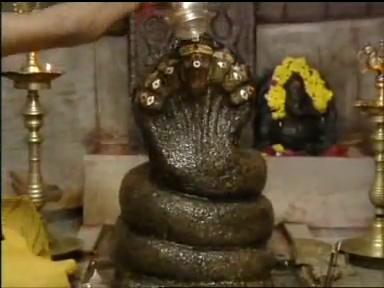Merudandasana (crow pose) |  |
 | |  |
 | Merudanda - Spinal Column
In this asana, the upper body is balanced on the arms, by pressing the legs against the arms, and the feet lifted off the floor.
|  |
 | Taking the asana positionInitial Position - Sitting position
| 1. | From sitting position, bring the feet in, close to the body, and come onto the toes with the support of the hands. |
|
| 2. | Place the hands about 1 to 1.5 ft apart on the ground in front of the knees, with the fingers spread out. |
| 3. | Bend the arms slightly and touch the inner side of the knees to the outer sides of the respective upper arms. The shins should also be touching the back of the respective upper arms. |
|
| 4. | Squeezing the knees against the arms and the arms pushing out against the knees, slowly lean the body forward, lifting the buttocks in the air, gradually transferring the body weight onto the hands. Then lift the feet off the floor, balancing the body on only the arms. The gaze should be on the ground about 3 ft forward. |
|
|  |
 | The asana positionIn this position, the hands form the base of the posture, so the fingers should be spread to form a wide base. The sides of the knees are pressing firmly against the sides of the respective upper arms, and the feet are lifted off the floor, with the big toes touching each other. In order to maintain balance, the gaze should be fixed on the floor, about 3 ft forward.
|  |
 | Releasing the asana position
| 1. | Slowly lower the feet to the ground by moving the body backwards. |
| 2. | Release the knees from the arms. |
| 3. | Come onto the toes. |
| 4. | Place the hands on the ground by the side of the hips, straighten out the legs and come back into sitting position. |
|
|  |
 | Anatomical focus |  |
 | AwarenessOn maintaining balance.
|  |
 | Do's
| 1. | Spread the fingers to form a wide base. |
| 2. | Lean the body forward so that the body weight shifts to the arms and the feet automatically lift off the floor. |
| 3. | Keep the big toes touching. |
| 4. | Breathe normally. |
|  |
 | Dont's
| 1. | Keep the elbows straight. |
| 2. | Look straight down on the floor. This increases the like hood of falling forward and landing on the nose/face. |
|
|  |
 | Benefits
| 1. | Balances the nervous system. |
| 2. | Strengthens the arms and wrists. |
| 3. | Develops sense of physical balance. |
|  |
 | Therapeutic application |  |
 | Precautions & contra-indications
| 1. | High blood pressure |
| 2. | Heart disease |
| 3. | Cerebral thrombosis |
|  |
 | DurationA steady pose should be held for at least 30 seconds. With practice, a steady posture can be held for 1 minute.
|  |
 | Variations & tipsThis asana requires more coordination and balancing rather than muscular strength. However, if the arms/wrists are not strong enough to support the entire body weight, you should lean the body weight forward onto the arms such that only one foot is lifted off the ground, with the toes of the other foot on the ground. Hold this pose for some time and alternate the foot being lifted up. This will help to develop the necessary strength in the arms/wrists to support the full pose.
|  |
 | Preparatory poses |  |
 | Follow-up poses |  |
 | Ancient texts |  |
 | |


కామెంట్లు లేవు:
కామెంట్ను పోస్ట్ చేయండి